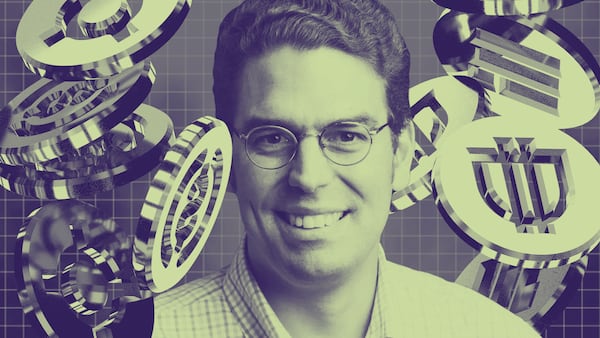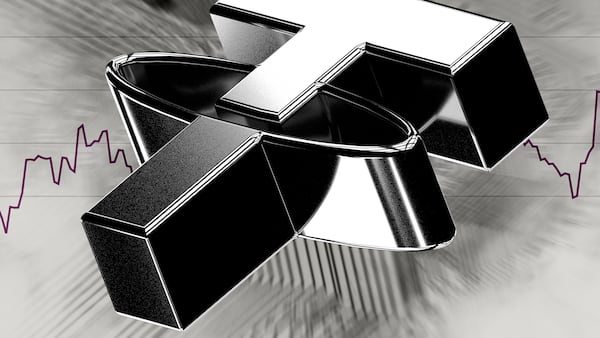- Maker founder strives to push DAI issuer beyond the control of states and bad actors with five-step plan.
- Christensen tells DL News plan can help spur mass adoption of DeFi protocols.
- Sceptics question whether DeFi protocol can truly revamp governance and operational structure.
- With over $6 billion in deposits, the eight-year-old venture is the second most valuable DeFi project.
When the Maker protocol and its governing body, MakerDAO, complete their transformation called Endgame, founder Rune Christensen can lean back with a cold drink in hand and feel satisfied. One of the most ambitious turnarounds in DeFi history will be complete.
Or will it?
Over the last several months, Endgame has moved in fits and starts as Maker’s influential community debates the plan’s merits, and its flaws. Yet in an exclusive interview with DL News, Christensen said the waiting may finally be over for his revamp of DeFi’s leading stablecoin and lending project.
NOW READ: MakerDAO members set to approve controversial ‘whistleblower bounty’ to enforce anonymity
And there are big changes in store ranging from the rollout of “subDAOs” to manage governance to paying MakerDAOs voters to participate in decision-making to even a new name for Maker and its two tokens, DAI and MKR. (See Here are the five phases of MakerDAO’s Endgame plan).
Used freely
The ultimate goal: to place Maker and its dollar-pegged, digital token DAI beyond the reach of any government, and impossible to shut down or turn off. As folks in crypto like to say, it will be uncensorable, pure digital cash to be used freely by anyone who wants it.
As regulators circle the industry, Christensen believes he’s finally found that elusive middle-ground between the crypto-libertarian ideals that powered Maker and its ilk and the practical demands of business.
Christensen believes he’s finally found that elusive middle-ground between the crypto-libertarian ideals that powered Maker and the practical demands of business.
“It’s sort of a risk trade-off,” he said in an exclusive and wide-ranging interview with DL News last week. People want a stateless, digital dollar “because they’re worried about governments being heavy handed and authoritarian, and so on, right? But when they say resilient, they also mean it needs to be worth $1. The $1, that’s the only thing there is.”
As Maker goes, so goes a lot of DeFi.
With more than $6 billion in deposits, or total value locked, the eight-year-old venture is the second most valuable DeFi project, according to DeFiLlama. It allows users to borrow DAI against a variety of collateral such as Ether, US Treasury notes, and other stablecoins.
NOW READ: ‘Sybil attackers’ raid airdrops for millions with bogus wallet addresses and cunning
Christensen’s aim with Endgame is two-fold: first, to harden Maker and DAI against any adversaries they might face, such as governments and criminals; second, to turbocharge participation in MakerDAO, the cooperative that runs Maker. After all, how resilient is an organisation or technology that relies on a small group of people?
Running through his work is a crucial theme — decentralised finance won’t mean much if it can’t be adopted at something close to a mass market level.
“The reality is, normal people are never going to care about decentralisation, or resilience,” Christensen said. “And I actually think that with Endgame, we’re getting as close as possible to short-circuiting that, and taking what sounds like some abstract, boring, complicated, libertarian ideal … and then transforming that into something that’s sort of in their face, that they actually do care about.”
Enormous stash
How to bring this about in terms of the process and the specifics has divided MakerDAO for months and frustrated observers who have struggled to keep pace. While Christensen may be optimistic a resolution is finally at hand, critics are sceptical Endgame will end anything.
And Christensen, who was once keen to watch MakerDAO governance from afar, has thrown his enormous stash of MKR, the project’s governance token, behind each proposal.
This move has triggered the suggestion from some that votes that appear to reflect the will of the Maker community are effectively rigged. (Each MKR is worth one vote.)
“If you look at the two largest wallets that voted for Endgame in March, they’re both his,” an Endgame critic and longtime MakerDAO contributor told DL News. “To say nothing of the delegates that were his.”
‘If you look at the two largest wallets that voted for Endgame in March, they’re both [Christensen’s].’
— MakerDAO contributor
In MakerDAO and other crypto cooperatives, members can lend their governance tokens to delegates, who are paid to use their technical expertise to monitor proposals and vote on members’ behalf.
Christensen said it was “funny” that some had complained about the myriad changes to Endgame.
“Of course it kept changing,” he said. “It kept improving due to community input.”
He also disputed the claim that he had forced Endgame through MakerDAO.
“Forcing it through would be if I had not incorporated any of the constructive input that people had given,” he said.
Given his enormous investment in Maker via the MKR token, “That would also be totally irrational of me. My incentive is to make it as good as possible.”
Massive undertaking
The process also has its supporters. The myriad changes were a necessary part of reorganising a multibillion-dollar organisation with more than 100 employees, according to Raphael Spannocchi, of crypto analytics firm Flipside.
“It’s a massive undertaking, and the details get phased in and iterated upon,” Spannocchi told DL News. Spannocchi was a Maker delegate, but switched to another role within the DAO due to a recently-approved anonymity requirement.
“I kind of get the frustration, but then again, I also don’t see a way this could be any different,” Spannocchi said.
And with all the tumult at MakerDAO, there’s been a loss of institutional knowledge. Several core engineers left in April. An anonymity requirement for delegates introduced last month is expected to drive some of them away from the DAO entirely.
The longtime contributor, meanwhile, appeared anxious about the loss of talented devs. “I don’t think Maker is going to collapse under the weight of this, but a lot of the professionalism, the people with the most institutional knowledge and the most valuable skill sets and experience — they’re leaving,” Spannocchi said.
Christensen called delegates’ departure a loss of “personal knowledge” and denied that it has hampered the DAO. In crafting Endgame, the DAO has codified internal rules and procedures, he said.
Real world assets
But he lamented the resignation of several developers from the Protocol Engineering Core Unit.
“They were just ideologically against this whole idea of real-world assets and this whole direction that Maker took early on, of focusing on scalability and focusing on serving end users at a large scale,” he said, “rather than stay true to this more extremist ideological perspective.”
Real world assets is a term for stocks, bonds, real estate and other TradFi instruments that are increasingly being put on-chain. Maker has been criticised for its growing reliance on real-world assets and other forms of collateral that could expose it to government regulation.
NOW READ: Cardano founder Charles Hoskinson tops Zuckerberg and Kardashian in private jet pollution
The mantle of an all-digital stablecoin has been taken up by competitors like RAI and LUSD, both of which only accept Ether as collateral. Christensen admires both, but doesn’t think they can scale to serve a mass audience.
“Some people, they’re just more into the pure, cyberpunk [thing],” he said, “while others are more into what’s practically possible to do in terms of bringing financial inclusion and decentralisation to normal people, to try to have an impact in the real world.”
Here comes subDAOs
Under Endgame, Maker is undertaking a five-step process for revamping its structure and its practices (see sidebar).
We’ve already seen an example of the innovation it could unleash, according to Spannocchi. He pointed to Spark Protocol, a new service that allows Maker users to take out loans in DAI without going through a third-party. Spark is expected to eventually become a subDAO, and its development was led by a former member of the now-defunct Protocol Engineering Core Unit.
“The way this came together and the speed with which they execute is something that Maker could have never done because Maker governance was really slow,” Spannocchi said. “I’ve heard from other builders who said to me in private, ‘It’s it’s amazing, for the first time since I’m involved in Maker, I’m only talking to the people I need to be talking to, and not, like, 100 others.’”
‘You can’t be a pirate organisation at this scale.’
— MakerDAO contributor
Even the longtime MakerDAO contributor acknowledged that governance suffers from apathy and that subDAOs could streamline decision making.
But he fears the mammoth proposal is an unfortunate case of mission drift. Maker should focus on reaching more people and becoming more useful, rather than hardening itself against world governments.
“You can’t be a pirate organisation at this scale,” they said.
As for Christensen, he expects to be able to finally step away from the DAO when Endgame is done. “On one hand, I have to work a lot now,” he said. “But on the other hand, I could see the light at the end of the tunnel.”
In other words, Christensen is hoping that Endgame is finally bringing his monumental retrofit to an end.
Have tips about Maker and other DeFi protocols? Contact the author at aleks@dlnews.com.



